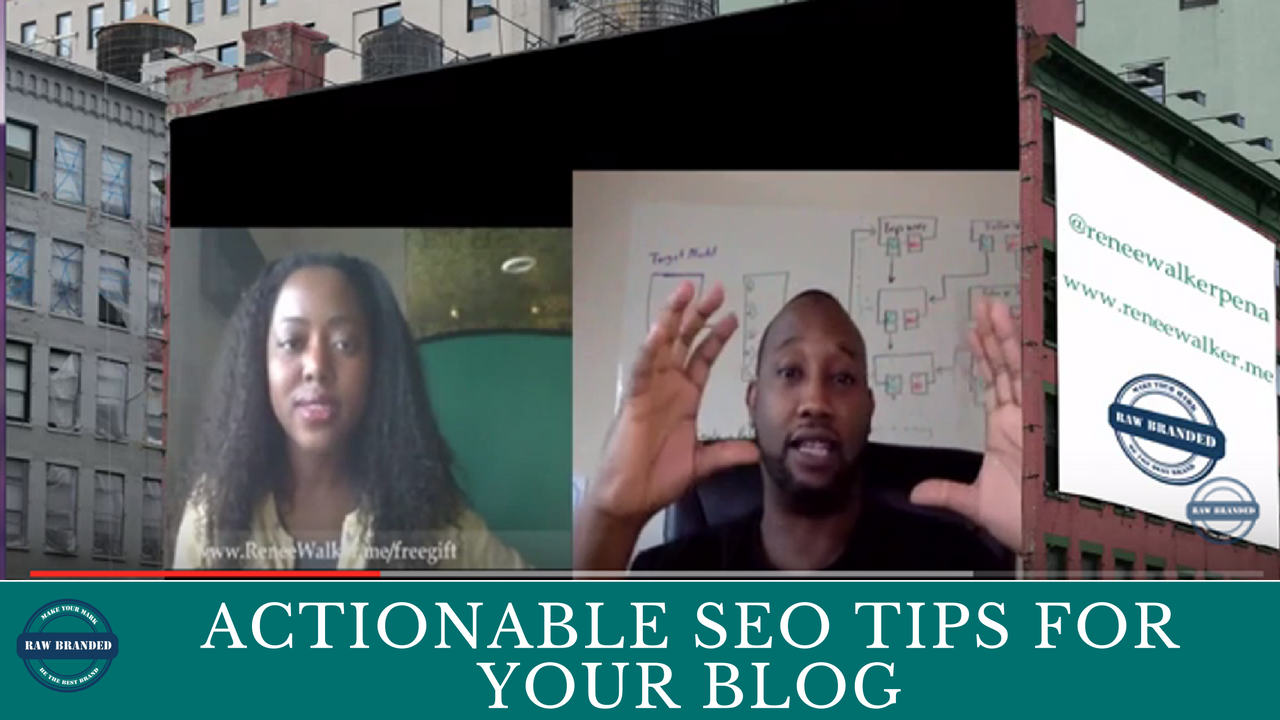If you already have a blog or website set up for your brand–kudos to you! That was your first milestone. Now, how is your site performing? Do you have visitors, or is your website more like a no man’s land? Sometimes it’s not enough just to build it in order for them to come. You also need to pull people into your site. One way to do this is by implementing keyword strategies. Don’t turn around and walk away! I know this one often sends content creators running. With the help of @dantegd76, I’ll give you bare bones, simple, and actionable SEO tips for your blog that can make a big difference on its performance.
Tip #1 – Utilize keywords.
You will be ranked by search engines according to your keywords’ relevance, so make sure that you select keywords that pertain to your blog topic. This will require some research. One simple way to do this is to start typing the first few words in Google. You’ll notice that Google will list similar long tail keywords (longer strings of words) in which site visitors frequently type into search engines. The longer the keyword, the more you’ll be able to niche down on your topic. There is a whole science that involves the popularity and competitiveness of keywords and data mining. However, looking at Google’s keyword autocomplete api is one way to quickly and easily identify what people are searching for. Furthermore, you’ll be able to find your list of competitors, based on the search results.
Tip #2 – Make sure keywords are included in your blog title.
The tech term for this is your H1 tag. In the HyperText Markup Language (HTML) coding world <h1> is your most important heading. Your H2 tag is second in priority to your H1 tag, followed by H3 tag and onward tags. Your H1 tag is visually the larger, pronounced text on your page and most likely (but not necessarily) your page title. A single H1 tag is needed to clarify what is most relevant on your webpage. For instance, this webpage’s H1 tag is <h1>actionable seo tips for you blog</h1>. If you’re using WordPress, there are several plugins you can use to simply type these keywords into your H1 field. The most important thing is to be consistent with the keywords you select for your page title and h1 tag.
Tip#3 – Include your keywords in the first paragraph of your page.
This will enable search bots to understand that your content is actually pertaining to the your topic. It must all appear seamless. Once upon a time, not long ago, digital marketers were abusing this tactic in order to quickly and easily rank in search. However, with the release of Google’s Panda and Penguin updates, bots got smarter and caught on to these “black hat” tricks. Many a sites have been banished by Google as a result. Use your keywords sparingly to avoid punishment!
Tip #4 – Have sizeable content.
The ideal length of blog posts are often debated. A good rule of thumb is to have at least 500 words in your post. Now, I have been known to break this rule myself. In my previous blogging life, I would write posts that were worthy of book chapters. I’ve since scaled back and often push myself to add more words! Bottom line, your blog post needs to have rich content. In the past, cyber sneaks would throw up sites plastered with ads and rank them for keywords in order to make big bucks. Are you old enough to remember those annoying sites? If not, just note that this why content is more important than ever. Your webpage needs to address the topic outlined in your title and H1 tag. Yes, Google bots are watching!
Tip #5 – Include meta tags.
Once again, this involves HTML. Meta elements outline your page description, author, attribute, and keywords (yes again). Your <meta> tags don’t appear on the page itself. They are usually located in the “head” section of your website’s code. You may notice meta descriptions are sometimes displayed in Google’s search results. While meta attributes tell robots whether or not they should follow the links on a page and index/display the page in search results. If you want to get techy with it, you can play around with the meta tags in your HTML … just don’t blow up your website! My advice is to download a nifty SEO plugin in which you can simply populate these fields and have them automatically display in your website’s coding.
That wasn’t so painful, now was it? These actionable SEO tips should increase the likelihood that your blog or website will turn up in searches. At the very least, search engines will have a better chance of crawling your website.
If you are ready to take a deeper dive into SEO strategies, sign up for my RAW BRANDED® Courses, where I will show you the step-by-step process of creating a website and optimizing it for search engines.





Start Playing BIG & Standing Out!
Get the 7 Steps to Attract Raving Fans To Your Brand.
Success! Check Your Email For Your Free Gift.
Privacy Policy: We hate SPAM and promise to keep your email address safe.